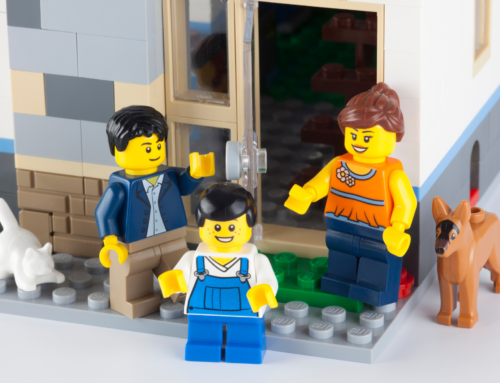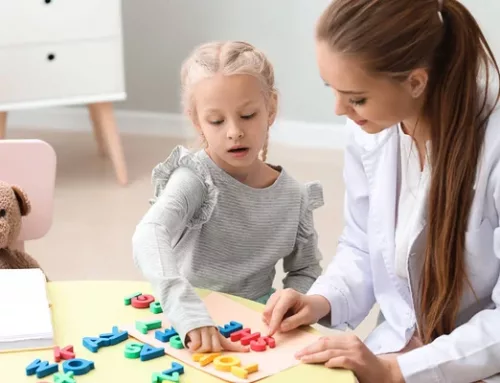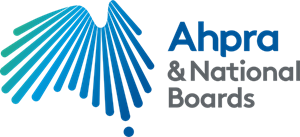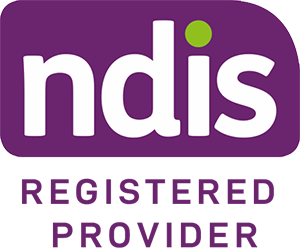Speech pathologists often use a lot of special terms to describe what we do, and we also use a lot of abbreviations which can sometimes get confusing too.
If you are a parent, teacher or other professional you may never have come across some of these terms. Throughout this blog we are going to explore and explain them, so it is easier for everyone to understand.
If you are seeing a speech pathologist and are not sure what a term means it is always best to ask them to explain it.
Age Appropriate
We use this to describe children who have skills that are suitable for their age and are consistent with their peers.
Articulation
This term refers to how we pronounce sounds. We often see children who may have concerns with their articulation, and this means that they may have difficulty making a sound due to their lips, tongue, jaw, palate or teeth.
Assessment
Assessment is important when you first see a Speech Pathologist. It gives you the opportunity to discuss your concerns, talk about your child’s interests and allows us to get to know your child and their communication. Speech Pathologists will often complete informal or formal assessments depending on the age and needs of your child. Informal assessment can include observation, using screeners or checklists. Formal assessment is used to see how your child’s communication is compared to their peers. This can help determine more clear goals and is sometimes needed for school or funding purposes.
Communication
Communication is what helps people form relationships with others by gathering and providing information. There are many purposes of communication including but not limited to; requesting, commenting and socialising. There are also many ways we communicate everyday including but not limited to; facial expressions, verbal language, gestures, visuals. Some people also use AAC which is explained below.
Delay
A delay refers to when a child is progressing at a slower rate than other children their age. Generally, we would expect that the child will develop their skills and become age appropriate with some support. We see lots of kids that may have delayed speech or language skills and with the support of home, preschool/school and a speech pathologist their communication improves, and they can communicate at an age appropriate level.
Disorder
If a child has a disorder this means that they have atypical development and they will require intensive intervention to develop their skills. Your child may have other diagnoses that have impacted their communication development. A disorder may be present for a variety of reasons and it is best to discuss this individually with your speech pathologist.
Dysfluency/Fluency
Dysfluency or stuttering is when an individual may have interrupted airflow or speech and they may repeat sounds, words or phrases in their speech. Fluency refers to when we have speech that flows without any interruptions or repetitions.
Grammar (Syntax)
This refers to the ‘rules’ we use which guide how we put words together in sentences. Examples of grammar include the use of plurals (bottle- bottles, mouse- mice) or past tense endings (pull-pulled, catch- caught).
Language
Language can be broken down into three key areas; receptive, expressive and pragmatic language. Receptive language refers to how we understand concepts, routines and instructions. For example, if you tell your child to get their shoes and hat, will they understand this and do it? Expressive language refers to how we use words and grammatical rules to form sentences when we communicate. For example, how many words does your child put together and do their sentences or phrases make sense? Pragmatic language refers to how we use social skills and understand the social context of communication. This can be things like reading others facial expressions and body language, using appropriate tone of voice and skills such as turn-taking and sharing. It is important to understand that using language may include different forms, for example, writing, gestures, signing and speech.
Milestone
A milestone is used as a guide for parents, educators and professionals which shows when children should be achieving specific skills. It is important to remember that all children grow and develop at different rates but if you are concerned it is important to not “wait and see”. See Speech Pathology Australia’s milestones.
Modelling
Speech pathologists love this term and we use modelling a lot when working with children and families. We also show parents how they model skills to their children and demonstrate new ways they can use this tool. Modelling is where you show your child a new skill by doing it first and then you may encourage them to have a turn.
Parallel Talk
This refers to what we say and comment on while your child is playing. You will typically make comments about what your child is seeing and doing. For example, “you are swinging so high, you can see the clouds and the trees”.
Phoneme
A phoneme is the individual sound in a word. For example the word “dog” has 3 phonemes /d/, /o/, /g/.
Phonological Awareness
This refers to skills that are crucial for the development of our ability to read, spell and write. Phonological awareness can include the ability to recognise patterns (rhyming) and to hear and change phonemes and syllables in words (segmenting and blending).
Phonological Processes
These are the sound patterns that children use when learning to talk. Sometimes our children will simplify sounds, for example they may say “tat” for “cat”. These patterns will typically change over time and your child should then be able to make accurate sounds. If you have any questions or concerns about your child’s sounds, then it is best to chat to a Speech Pathologist.
Screener
A screener is a short informal assessment tool that we sometimes use that gives us some information about your child’s communication and it can help us to determine if further assessment is needed.
Self-Talk
This refers to what we say to show our child what we can hear, see or are doing. For example, “I am putting the dirty washing into the machine, I push the buttons, beep!”
Speech
This is how we verbally communicate. Speech Pathologists will observe different aspects of your child’s speech including their articulation or phonological processes, fluency and voice.
Acronyms
AAC – Alternative and augmentative communication. AAC refers to all forms of communication including; gestures, visuals, signing and speech generating devices. AAC may be used to support or replace verbal communication.
CPSP- Certified Practising Speech Pathologist.
EBP- Evidence Based Practice.
EI- Early intervention
IEP- Individualised education plan
NDIS- National Disability Insurance Scheme.
OT- Occupational Therapy
PT- Physiotherapy
SLSO- Student learning support officer
SP- Speech Pathologist. Sometimes you may see SLP which refers to Speech and Language Pathologist.
SPA/MSPA- Speech Pathology Australia/member of Speech Pathology Australia.






Age Appropriate
We use this to describe children who have skills that are suitable for their age and are consistent with their peers.
Speech Pathology Can Help
If you are concerned with your child’s speech, language or communication development, a Speech Pathology professional is wonderfully positioned to help determine if it is something to be concerned about and what can be done to support them effectively. You can either talk to your GP or Paediatrician who may refer you to a suitable health professional such as a Speech Pathologist, or you can go directly to a Speech Pathologist yourself. Beam Health has Speech Pathologists that are experienced in supporting children and young people with speech, language and communication concerns and there are many other wonderful Speech Pathologists around that you can go to.
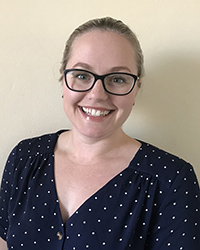
Vivien Edwards
Speech Pathologist, Beam Health




